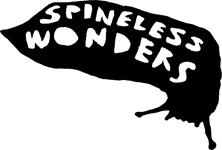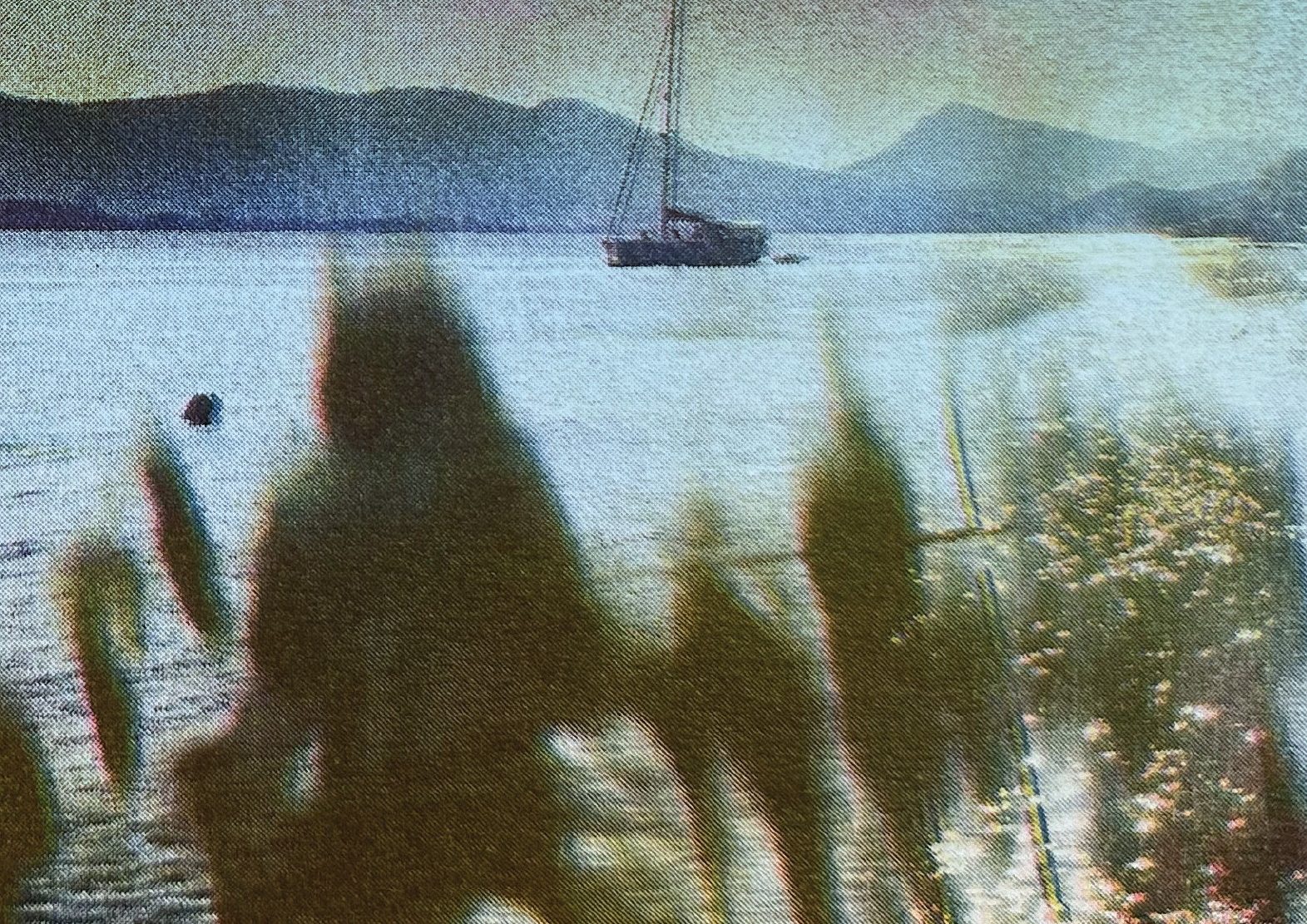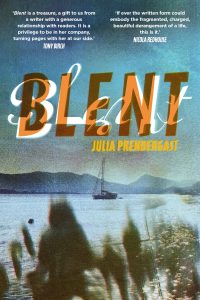In this interview, Julia Prendergast speaks about the inspiration for her new release novella, Blent, the influences on her style of writing, and the Australian literary scene. This interview was created by Katie Price and Selena Madrio.
- Where did the idea for Blent begin for you? Was it sparked by a character, an image, the story itself, place, or something else altogether? On a related note, much of Blent is set in Greece. Did you travel to Greece during the writing process? Do you find value in writing in settings similar to those your characters are in?
Blent was seeded in my captivation by the Greek island of Poros.
I visited Poros some years ago, after the New York Writers Workshop in Hydra. I am utterly taken with this island, which feels like Greece as it may have existed many moons ago. The locals I’ve encountered in Poros have lived there for generations. It is place of everyday storytellers. In this respect, it’s not unlike other parts of Greece I’ve been lucky enough to visit.

The cove of Neorio in Poros, where Blent is largely set, is governed by the wind—a natural element I am bewitched by, wind-speak—the inhale and exhale of the wind as it plays out across the cove of Neorio on any given day.
In this respect, Poros reminds me of places I know and love on the Mornington Peninsula in Victoria—seascapes that have captured my heart and mind, reflecting the windy nature of our sense of ourselves, plural—shapeshifting gusts blowing in any given direction on any given day, influencing our mind’s eye, shaping how we engage with all we see, feel, understand, and don’t …
When I was prevaricating about this book—wondering if I could, in fact, bring it to fruition to my satisfaction—I travelled to Poros to complete it. This was deeply valuable—writing and rewriting in scene, in place, in time.
- In Blent, physical objects—Mae’s and June’s diaries, Mae’s polaroids, and even cigarettes—often seem more solid than people. What interests you about the elusiveness of the self? Of others’ selves?
Ah. Everything.
On many occasions I have suggested that anything I write that feels worthwhile, for me, arises from what I describe as the haunting incompleteness of human experience.
That is to say, I feel that living is a process of coming to know ourselves in all our shifting complexity—as much as it is governed by our desire to connect with, and understand, others … particularly those we love.
Coming to know and understand is also a process of considering our past selves alongside our present selves—acknowledging the ways in which memories (which we constantly revisit and revise) shape and inform our living, as well as the ways our past and present versions-of-self jostle and pervade our living.
- Reviewers have described Blent as “deeply lyrical,” a “psychic autobiography,” “[t]hrilling and genre defying,” and “like a dream.” Did you intend to blend genres when writing Blent and, if so, why?
The short answer is no.
However …
As I suggest in the acknowledgements of Blent, this novella is hybrid work of fiction offered to readers who engage with the conundrum and contradiction of love and loss. It doesn’t care about genre classifications. Nor, may I add, do I.
I am currently working—along with two colleagues—on a scholarly book focusing genre (broadly conceived). But for the thinking I was invited to do alongside these colleagues, I’m not sure my creative-practice mind would have bent itself towards Blent.
When I write creatively, I don’t think in terms of genre. Nor do I engage with works I read (novels, short stories, poems, narrative-driven essays) in terms of genre demarcations. For me, it’s always and ever about the voice and the story—the significance of associative matter—rather than genre classifications.
So, there’s nothing intentional in the ways my writing bleeds between genres. Perhaps it’s the only way I can write or, at the very least, the only way I could write this story.
-
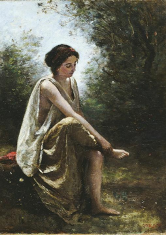
Image of Wounded Eurydice Cassandra Atherton, Distinguished Professor of Writing and Literature, called Blent’s main character, June, “a modern-day Eurydice searching for an ending to her narrative.” What are your thoughts on that parallel?
I am taken with Atherton’s comparison.
The name Eurydice is understood, in translation, as “wide justice […] true judgement or profound judgement” [1]. Symbolically, various interpretations include Eurydice’s close association with nature, as well as her profound understanding of those parts of us that are present but unseen, including our sense of our past selves.
This is in keeping with my iterative understanding of June’s character. June both innately trusts, and relentlessly questions, her perceptions—interrogating all she sees and feels she knows, as well as those things she grapples to understand.
I suspect Atherton’s reflection relates to June’s interrogative rumination upon her perception of the world—of self, past selves, and others.
- Blent’s protagonist, June, has many little rituals—she goes to taverns, re-reads Mae’s diaries, smokes pink slim cigarettes, and even likes tea in the sun. Do you have any rituals that aid your writing process?
SO MANY!
There are numerous things I do on-repeat (rinse and repeat, my dear siblings say of my patterns-of-practice). I’m a routine person. The rituals I engage in range from repeat consumption of food and beverages I love, themes I follow relentlessly in reading and writing, songs I listen to, over and again, clothes I wear …
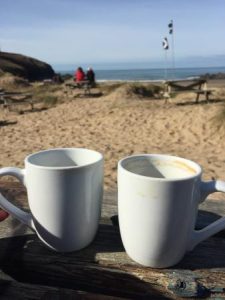
Plus, who doesn’t love a cup of tea in the sunshine?
- If you were to share a cup of tea with any character in Blent, who would you choose and what would you
talk about?
I’d like to hang out with Mae and June, together. I’m not sure there’d be room for anyone else at the table but—deary me—I’d love to be invited into a present-tense interaction between the two of them.
- Writing is a motif in Blent: Mae’s journals, June’s journal, and June’s writing career are all integral to the story. Did you intend to write about writing, or did it develop organically?
I’ve not written about writing before Blent and I had no conscious intention of setting out to do so. As the novella developed, the epistolary elements of the narrative triggered content reflecting my fixation on memory and reflective nostalgia, as well as my examination of the practice of writing as I understand it.
While these elements of the narrative emerged without logical planning or intent, and served to plague me as I progressed—What did they mean? What was the purpose of these ekphrastic riffs for the architecture of the narrative as whole? How might they best facilitate the reader’s engagement with the story, overall?—they helped me make sense of June’s character as the story progressed.
- You have published a novel, short stories, prose poetry and, now, a novella. What do you like that is unique to the novella form?
I LOVE the form of the novella—for its intensity.
I feel the novella is a close sibling of the short story—where each word, each scene, must contribute without superfluity—while also offering writers the freedom to move beyond the physical parameters of the short story form. Compared to the novel, there is little room for subplots and complex backstory, however, I don’t feel the novella to be lacking in its comparative brevity. I’m taken with the ghostly gesturing of novellas, the scope for some exploration of sideshadows and backalleys.
Further, while I didn’t set out with the intention of writing a novella, I soon realised I was working on a story that was neither a short story nor a novel. When I came to this realisation, I pitched the novella to Bronwyn Mehan, publishing Director at Spineless Wonders. I revere Bron for her expansive vision for short stories and their siblings—novellas and prose poems. I admire Bron’s compass, particularly her celebration of narrative lyricism and experimental narrative forms. I’m grateful to Bron for publishing this book, for believing in it, and me.
- What has influenced your writing style? What writing do you admire and why?
Where to begin or end in answering this question?
The prologue to Blent is, perhaps, a beginning: ‘Writing comes like the wind. It’s naked. It’s made of ink, it’s the thing written, and it passes like nothing else passes in life, except life itself’ (Duras 2011: 45). I’m committed to writing in a style that replicates one’s experience of what it feels like to move through the world.
I revere writers who excel at this, Marguerite Duras and Deborah Levy among others—in particular Duras’ Writing and Me and Other Writing, and Levy’s trilogy: Things I Don’t Want To Know (2018), The Cost of Living (2019), Real Estate (2022). As I considered the governing force of memory, as it informs practice in all aspects of my life, I was drawn to revisit Duras and Levy.
Another way of beginning is for me to think about my studies.
As an undergraduate Arts student, my majors were English Literature and Classical Literature, with a minor in Visual Arts. I engaged with texts that were—and still are, for many—deemed reflective of theEnglish canon: classical novels, short stories, and poetry. Bronte’s Wuthering Heights is tattooed in my mind, together with countless short stories and poems.
I relished every second of my studies in Classical Literature. I love the ancient Greek myths, the sing-song harmony of the chorus. Euripides’ the Trojan Women is another mind-tattoo.
While visual arts is not a writing influence, per se, I remain interested in visual art, including experimental arthouse films—the synergy between acts-of-making within the context of visual art and the labour of writers, toiling with experiential detail in prose.
I subsequently completed postgraduate studies in Writing and Literature—Honours, Masters, PhD. I undertook these studies because I wanted to commit myself to a program with fixed writing deadlines, ensuring I was exposed to writing across diverse forms and traditions. I’m inordinately grateful to have read novels, short stories, poems and scripts I’d otherwise never have encountered, together with a wide array of critical theory and reflections upon craft.
There are too many tattoo-worthy examples to mention …
These days I read a great deal of contemporary writing. I’m a diehard for realist prose, broadly conceived. I read work by Australian as well as international authors, including works in translation: novels, novellas, short stories, narrative-driven essays, poetry.
There are certainly many contemporary writers I’ve encountered in deep reverence, subsequently inhaling (reading and re-reading) everything they’ve published.
- Is there anything you would like to see more of in the Australian literary scene?
I would welcome more novellas. I appreciate it’s not the most marketable form only I’m utterly taken with it, just as I am captivated by long-form narrative-driven essays, and hybrid forms of prose.
My short story collection, Bloodrust and Other Stories, includes traditional-length short stories, long-form short stories and micro stories. A critic argued that some of the micro prose in this collection is, more accurately, poetry. By the
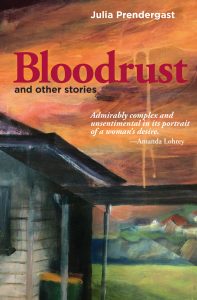
same logic, some may argue that, in ekphrastic riffs, Blent is creative nonfiction-esque or gesturing towards a narrative-driven essay, as much as it is straight-shooting fiction. I don’t engage with writing in segregational ways. As both a writer and a reader, I find myself immersed in the shadow-speak of images as they build cumulatively in our minds, whether that be in slant or via a more traditional narrative arc.
Further, I don’t really care whether a story is ‘true’ or not, in the sense of any perceived correlation between story-work and the author’s life. To my mind, the imperatives of this discussion are not only slippery, at best, they are also irrelevant when it comes to my engagement with the words on the page.
The critic James Ley provides a compelling account of this slipperiness, suggesting that narrative truth is ‘always provisional and subjective. It is why realism is ultimately in the eye of the beholder […] By being railroaded into a narrative, autobiography becomes ?ctionalised’ (Ley 2005: np). We have seen the work of authors such as Helen Garner scrutinised in the manner Ley describes. I think upon my own engagement with Garner’s Everywhere I Look and True Stories (text publishing, 2017; 2018), and her published diaries (2019; 2020; 2023), as well as those of her books marketed as ?ction (see, for example: Cosmo Cosmolino, 1992 and The Spare Room, 2009). Coming clean about Monkey Grip (1977), which was initially marketed as a novel, Garner focuses degrees of realism and invention, suggesting that: ‘the “I” in the story is never completely me […] There can be no writing without the creation of a persona. In order to write intimately – in order to write at all – one has to invent an “I”’ (2022: np).
I’m with Garner. They’re all stories to me.
For any readers who are interested in my ruminations upon this subject, please see my narrative-driven essay: What are you doing it for? Realist writing – the riddled boundary that divides fiction and reality
- Everyone should read Blent, but what type of reader do you think would particularly enjoy the novella?
I think Blent may appeal to readers who are open to experimental and hybrid forms of fiction, as well as to writing that provokes an examination of memory—our iterative engagement with lived experience as it informs our ever-developing personhood, as this is reflected in the way we move through the world.
Blent is available here at a special pre-release discount price.
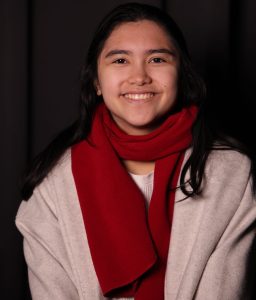
Selena Madrio (she/her) studies Bachelor of Arts at UNSW, majoring in English. She is fascinated by the vast ability of narrative and its endless possibilities.
Katie Short (she/her) is a Media Studies and English student at the University of Sydney. Her writing can be found in PULP Magazine and the South Coast Writers Centre’s Days Since anthology. She is a short fiction editor for the Sydney Arts Students’ Society’s publications 1978 and Avenue.
Image Sources:
Sunset Over Coastal Harbour – Okan Demircan (via Pexels)
Wounded Eurydice – (via Artvee)
Cup of Tea in the Sun – (via Tripadvisor)
References:
Duras M 2011, Writing, trans. Mark Polizzotti, Minneapolis: University of Minnesota Press.
Garner, H. 2002. “Last Winter I had an Unexpected Visitor … Helen Garner Re?ects on Life, Art and Her Novel Monkey Grip.” Meanjin Essays, Accessed 21 January 2022. https://meanjin.com.au/essays/i/.
Ley, J. 2005. “The Tyranny of the Literal.” Australian Book Review online archive. April. 2005, no. 70.
Notes:
[1] https://www.etymonline.com/word/Eurydice; https://worldhistoryedu.com/the-myth-of-orpheus-and-eurydice/
